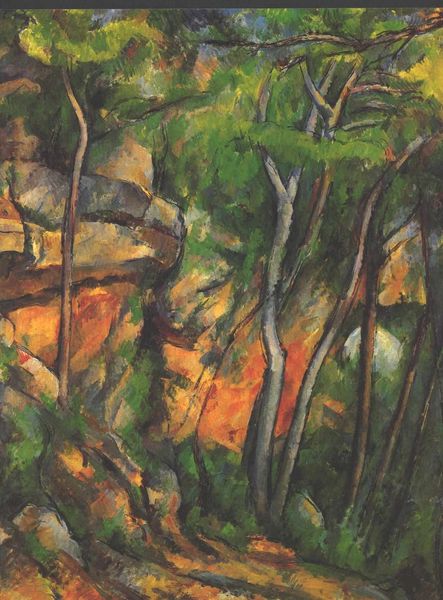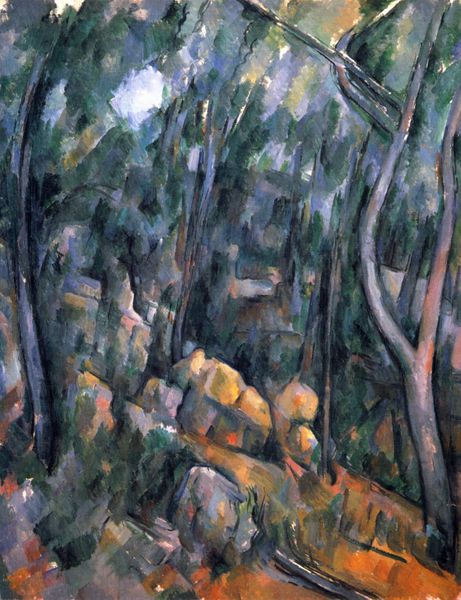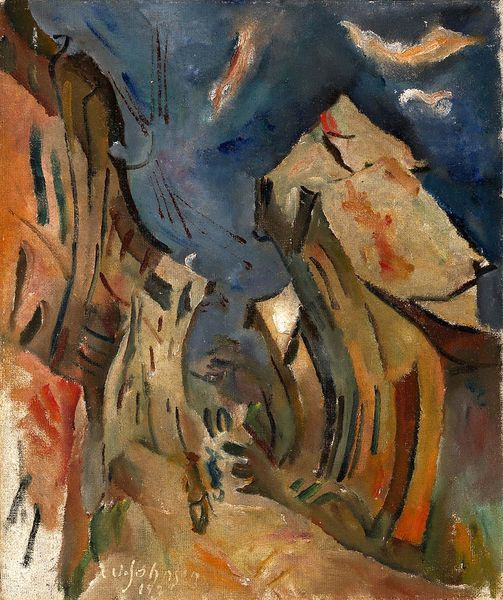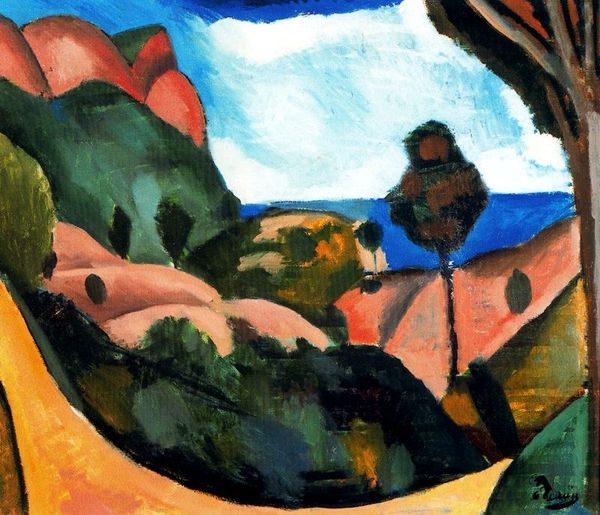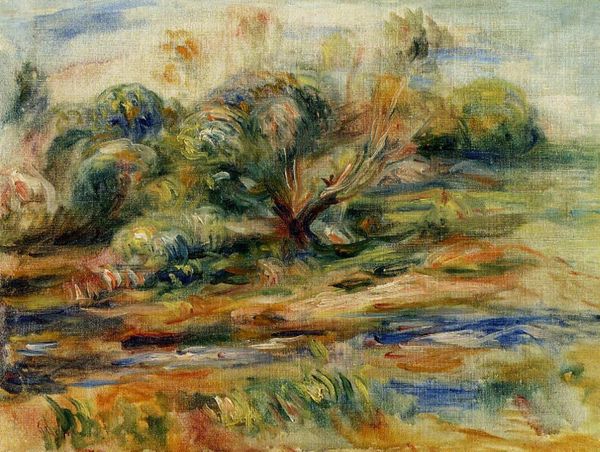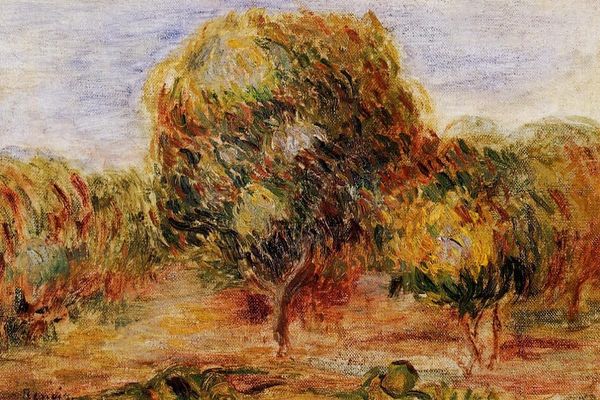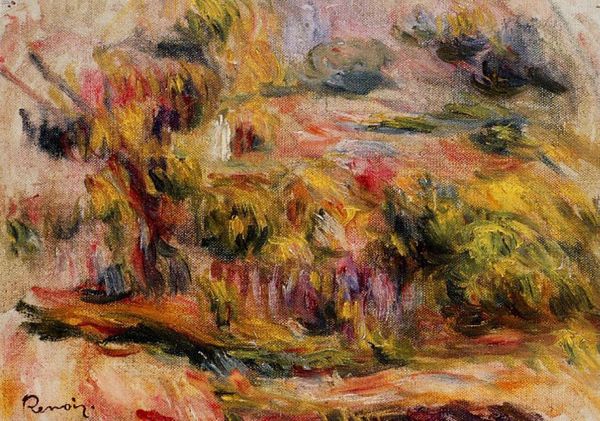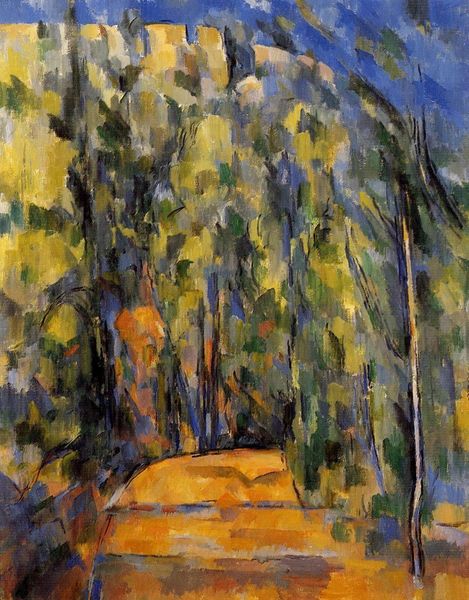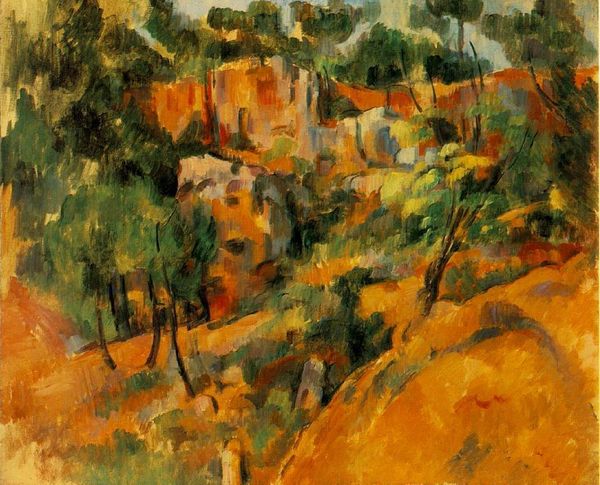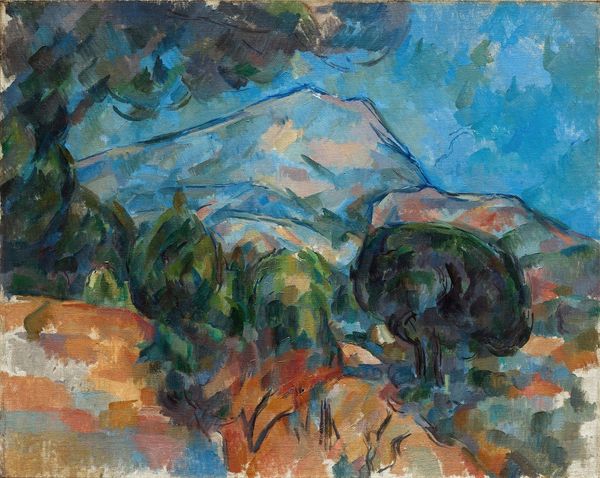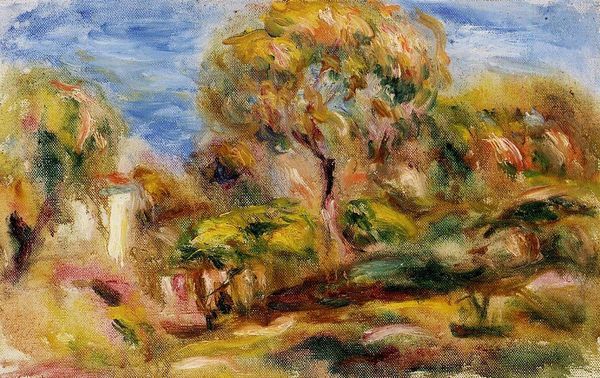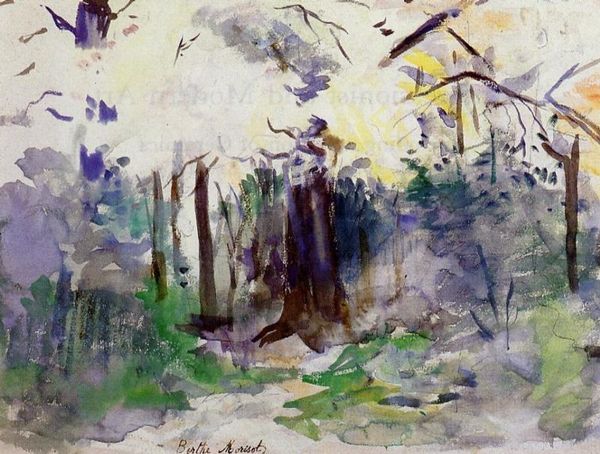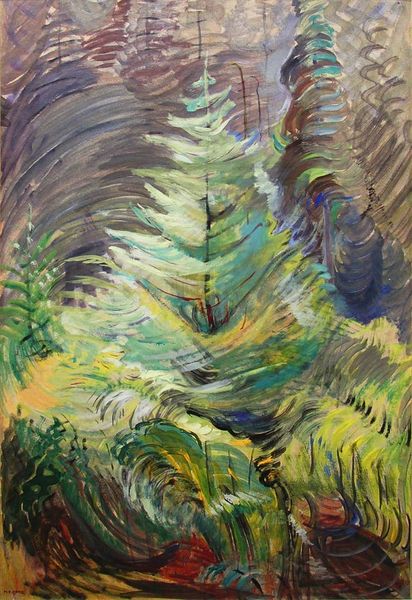
painting, plein-air, oil-paint, impasto
#
tree
#
painting
#
plein-air
#
oil-paint
#
landscape
#
impressionist landscape
#
impasto
#
symbolism
#
post-impressionism
Dimensions: 65 x 54 cm
Copyright: Public domain
Editor: Here we have Paul Cézanne’s “Rocks near the Caves below the Chateau Noir,” created around 1904, using oil paint, I think, applied with impasto in plein-air. The brushstrokes feel really deliberate, almost constructive. What's your perspective on this work? Curator: What strikes me is Cézanne's intense focus on materiality. Look at the facture of the paint itself, the thick impasto almost turning the surface into a relief. It ceases to merely depict rocks and trees; it presents pigment as its own entity. How does that shift our understanding of landscape painting? Editor: It definitely makes me think less about the *scene* and more about the *making* of the scene. Like, what kind of labor and process went into building this up layer by layer? Curator: Precisely. And consider the Chateau Noir itself. It's a place tied to wealth and social hierarchy. By depicting the "rocks near the caves below", isn't Cézanne almost subverting that hierarchy, directing our gaze downward, grounding us in the materiality of the earth? It becomes a dialogue, then, about land ownership and use. Do you notice any repetition of colors in this image? Editor: There is quite a bit of similar oranges, blues, and greens on both rocks and vegetation. Perhaps that blurs the distinction, creating a sense of unified matter? Curator: Yes. Cézanne manipulates our gaze, forcing us to consider the canvas itself, the raw materials from which the landscape emerges, as much as the subject. By disrupting our conventions, is he drawing attention to the societal structures underlying artistic production and consumption? Editor: So, it's less about a beautiful landscape and more about an exploration of how we perceive and create these images in the first place and why? I guess the next step would be questioning the materials used and see the socio economic impact of it? Curator: Precisely! Cézanne, in this way, encourages us to excavate not only the pictorial surface, but also the layers of social meaning embedded within the act of painting itself. Editor: That gives me so much to think about. I never considered the labor involved when looking at what I thought were "beautiful" paintings!
Comments
No comments
Be the first to comment and join the conversation on the ultimate creative platform.
